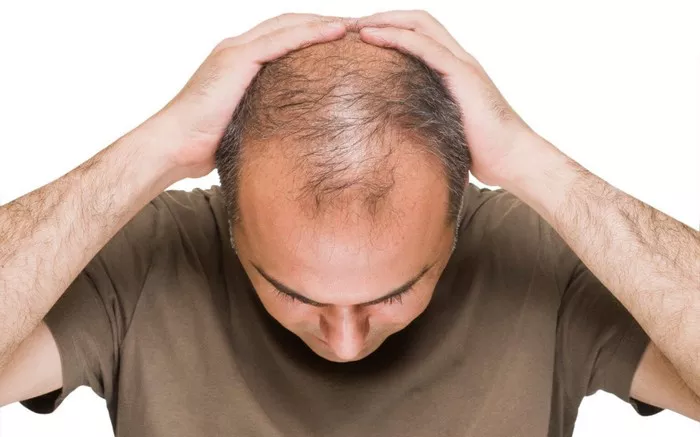Hair loss is a common concern among individuals with diabetes, yet the connection between the two conditions is often overlooked. Diabetes, a chronic metabolic disorder characterized by high blood sugar levels, affects millions of people worldwide. Hair loss, whether in the form of thinning hair or bald patches, can be distressing and impact self-esteem, adding an additional layer of concern for those already managing diabetes.
Common Causes of Hair Loss in People with Diabetes:
1. High Blood Glucose Levels:
Persistently high blood sugar levels, a hallmark of diabetes, can have detrimental effects on various organs and tissues in the body, including the scalp and hair follicles. Chronic hyperglycemia can damage small blood vessels, leading to reduced blood flow to the scalp. As a result, hair follicles may receive fewer oxygen and nutrients, which are essential for healthy hair growth. Over time, this can contribute to hair thinning and eventual hair loss.
2. Thyroid Issues:
Individuals with diabetes are at an increased risk of developing thyroid disorders, particularly hypothyroidism. Hypothyroidism occurs when the thyroid gland does not produce enough thyroid hormone, which plays a crucial role in regulating metabolism and supporting hair growth. Hair loss is a common symptom of hypothyroidism, and it may present as thinning of the hair, brittle hair, or even bald patches. Regular monitoring of thyroid function through annual screenings is essential for individuals with diabetes to detect and manage thyroid issues promptly. Additionally, adopting a gluten-free diet may benefit those with autoimmune thyroid disease, as gluten intolerance has been linked to thyroid dysfunction.
3. Anemia:
Anemia, characterized by low levels of red blood cells or hemoglobin, is another common cause of hair loss in individuals with diabetes. Iron deficiency anemia, in particular, can impair the body’s ability to deliver oxygen to tissues, including the hair follicles. Without an adequate oxygen supply, hair growth may be disrupted, leading to hair thinning and shedding. Annual laboratory tests to assess iron levels and hemoglobin levels are recommended for individuals with diabetes to identify and address anemia early. Iron supplements may be prescribed to replenish iron stores and improve hair health.
Specific Medications Associated with Hair Loss:
While many medications used to manage diabetes are generally well-tolerated, some may have side effects, including hair loss. One such medication is Semaglutide, sold under the brand name Ozempic. Ozempic belongs to a class of drugs known as GLP-1 receptor agonists and is commonly used to lower blood sugar levels in individuals with type 2 diabetes.
Semaglutide works by stimulating the secretion of insulin from the pancreas, reducing appetite, and promoting weight loss. While effective in managing blood sugar levels and supporting weight loss, some individuals may experience hair loss as a side effect of Ozempic treatment. Though the exact mechanism underlying this side effect is not fully understood, it is believed to be related to hormonal changes induced by the medication.
Treatment Options:
Managing diabetes effectively is key to minimizing the risk of complications, including hair loss. Here are some strategies to consider:
1. Maintaining Good Blood Sugar Control:
Keeping blood sugar levels within target ranges through diet, exercise, medication, and regular monitoring is essential for overall health, including hair health. Consistently high blood sugar levels can contribute to hair loss, so working with healthcare professionals to develop a comprehensive diabetes management plan is crucial.
2. Regular Exercise:
Engaging in regular physical activity can help improve blood sugar control, reduce insulin resistance, and lower stress levels, all of which can benefit hair health. Aim for a combination of aerobic exercise, strength training, and flexibility exercises to promote overall well-being.
3. Hair Loss Treatments:
Various treatment options are available for managing hair loss, including over-the-counter medications, prescription treatments, and procedures such as hair transplantation. Minoxidil, a topical medication, is FDA-approved for the treatment of hair loss and may be recommended by healthcare professionals. Finasteride, an oral medication, may also be prescribed for certain individuals to help prevent further hair loss.
4. Addressing Underlying Health Conditions:
In addition to managing diabetes, addressing underlying health issues such as thyroid disorders and anemia is essential for promoting hair health. Working closely with healthcare providers to diagnose and treat these conditions can improve overall well-being and reduce the risk of hair loss.
Conclusion:
Hair loss can be a distressing side effect of diabetes, but it is not inevitable. By understanding the common causes of hair loss in individuals with diabetes and implementing strategies to manage blood sugar levels and promote overall health, it is possible to maintain healthy hair. Additionally, consulting with healthcare professionals for personalized advice and treatment recommendations is essential for addressing hair loss concerns effectively. With proactive management and support, individuals with diabetes can take control of their hair health and enhance their quality of life.


